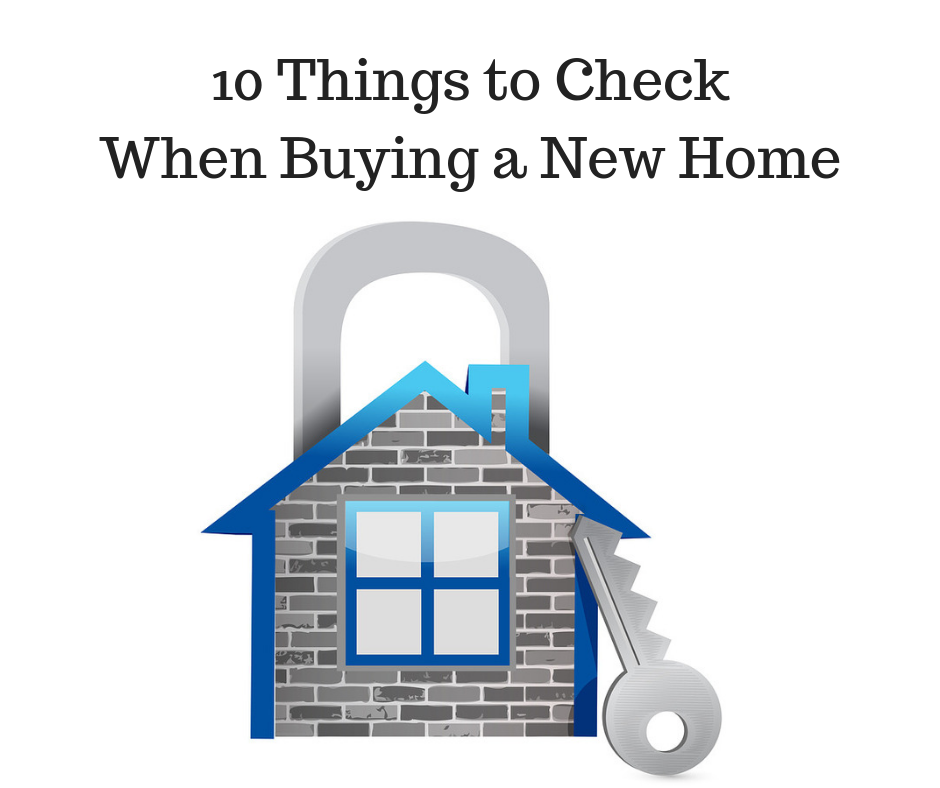 It is said that people make up their mind about a house within seconds of walking in the front door. When viewing new properties, you might fall in love with one, so much so that the dated avocado bathroom doesn’t put you off as you think ‘we can get a new bathroom anyway’. But before you put in that offer and go to the expense of arranging a survey once the offer has been accepted, what should you look out for first? Here’s our list:
It is said that people make up their mind about a house within seconds of walking in the front door. When viewing new properties, you might fall in love with one, so much so that the dated avocado bathroom doesn’t put you off as you think ‘we can get a new bathroom anyway’. But before you put in that offer and go to the expense of arranging a survey once the offer has been accepted, what should you look out for first? Here’s our list:
1. Visit at Different Times
Perhaps parking was plentiful and traffic was non-existent on the day you saw the property but was there a reason for that? Was it because it was a Saturday morning or a Monday at lunch-time? Drive around at peak times such as 8:30 am and 5:30 pm on a weekday to check for the volume of traffic, availability of parking and general atmosphere. Check it out at 11pm to see if it is well lit and feels safe should you decide to stroll home from the nearby pub.
2. Broadband and Phone Signal
I know the broadband speed shouldn’t be a deal breaker if you’ve found the home of your dreams but there are still plenty of areas (both rural and urban) where broadband speeds and phone signals are extremely limited. Do you really want to be hanging out of the window of the box-room as it’s the only place to get a signal? It’s particularly important if you’re considering working from home, even just one day a week.
If it is poorer than you would like, chat to the neighbours or the local shopkeeper to see if there are any plans afoot for improvements in the near future.
3. Damp
Signs of damp can usually be spotted fairly easy and usually mean a red flag. It doesn’t mean you shouldn’t buy the property but a very thorough survey will be required. Signs of damp would include the smell of paint (freshly painted rooms to cover the damp signs), water stained walls or ceilings, flaky paint or plaster, or black mould spots.
4. Orientation
Which rooms are south and east facing and will get the sun in the mornings? Rooms that are north-facing will be darker and colder. Again, not necessarily a deal-breaker but a south or east facing kitchen is lovely, as is a living room that faces west particularly if you’re lucky enough to have a good view of the horizon.
5. Size of Rooms
Check the size of the rooms, especially if you are looking around a showhouse or new build as it can happen that smaller-than-standard furniture is put in-situ which will make the rooms appear larger than they actually are. If you have specific furniture that you intend to bring with you, measure it and check the measurements within the relevant rooms.
Strategically placed mirrors and lighting can make rooms appear larger too so re-visit with fresh eyes.
6. The Roof
The roof is hugely expensive to repair or replace and any problems should be reflected in the asking price. Again, it doesn’t mean you don’t buy but when compared to a house down the road that is in excellent condition, how does the price compare? Remember there is also the inconvenience of getting work done especially if you can’t live in the property when it is being carried out.
Check out the attic space too if you think you might, someday, wish to do an attic conversion. Are the trusses positioned appropriately with enough roof height to create a sizeable room? Would you be able to install stairs to the attic without sacrificing a whole room?
7. Energy Efficiency
The BER rating will give an indication of the home’s energy efficiency and should be available from the estate agent. Check the insulation, the window glazing, if there are solar panels, the type of heating, and many new homes now have Heat Recovery Ventilation (which reuses heat generated in rooms such as the shower room and kitchen) and bring fresh air into a sealed building. The energy efficiency can have quite an impact on your annual bills.
8. Water Pressure
It can happen, especially in old houses, that the water pressure can be very low. You can test it easily by switching on the taps and /or the shower. This is particularly important if you’re buying a rural home with its own well. Sinking another well is expensive so check out if you’ll need one in the near future.
9. Compare Prices
You can check what local houses sold for recently through the Property Price Register. This helps to give you a guide price although do bear in mind that much depends on the condition of the house.
Be it global warming or the fact that some houses have been built on flood plains, flooding seems to be on the increase. Do check if the area has been flooded in recent years. Is it close to a river that might burst its banks? Contact a couple of insurance companies for quotes and they will tell you if the risk of flooding in that area means a high premium.
Above all, visit your prospective new home on a couple of occasions. Give yourself some time to consider it carefully as although it may not be a decision for life, it will affect you for many years, hopefully in a positive way. Best of luck in buying a new home and we hope you enjoy the process.






